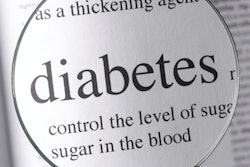
Women face unique oral health challenges throughout their lifetime, thanks in part to fluctuating hormones, according to a presentation by periodontist Jacqueline Plemons, DDS, at the recent California Dental Association's CDA Presents 2018 meeting in San Francisco.
Dr. Plemons detailed how hormone levels affect women's periodontal health and explained what dentists can do to help the female half of their patients maintain healthy teeth and gums. She also shared tips for dentists when working with women across their life cycle, from puberty and menopause to pregnancy and hormonal contraception.
"Chances are that the patient you met and evaluated at their initial examination may not be the same patient with the same needs who is sitting in your dental chair just a few years later," Dr. Plemons told DrBicuspid.com. "In a lifetime, women experience certain periods of change that may adversely affect oral health. Recognizing these potential changes and developing treatment strategies to prevent disease and maintain optimal oral health over a lifetime are the ultimate goals."
Dr. Plemons has a private periodontal practice in Dallas and is a professor in the department of periodontics at the Texas A&M College of Dentistry, as well as the assistant director of the college's Stomatology Center.
Hormones and periodontal health
It is well known that hormones can affect periodontal health. In fact, estrogen and progesterone receptors have even been found in periodontal tissue, according to Dr. Plemons.
“In a lifetime, women experience certain periods of change that may adversely affect oral health.”
"Levels of these hormones can affect the periodontium by modifying vascular proliferation and permeability, local immune response, collagen turnover and repair, crevicular fluid levels, and the oral biofilm or microbiota," she said. "These changes within the tissues are ultimately reflected in clinical signs and symptoms, such as swelling, edema, bleeding, and increase in probing depth."
Because an increase in hormone levels is associated with bleeding and swollen gums, females may first notice a change in their gum health at puberty. However, others may report gum problems during menstruation, when using birth control pills, or when pregnant, Dr. Plemons noted.
"Women who are pregnant or considering becoming pregnant should ideally see a dentist for a periodontal examination not only to prevent periodontal disease but also to perhaps decrease the chance of adverse pregnancy outcomes," she advised. "The old wives' tale of not getting your teeth cleaned while pregnant is a myth -- controlling inflammation is of benefit in almost any situation associated with hormonal changes."
And then there's menopause, when decreasing levels of estrogen, progesterone, and testosterone present another set of oral health challenges.
"Clinical changes during menopause include a dry and/or burning mouth, thinning of the oral mucosa resulting in erythema or pallor, taste disturbances, and nonspecific erythema of the gingiva," Dr. Plemons said. "Loss of estrogen in perimenopausal and menopausal women is also a risk factor for osteoporosis, which in turn may be associated with alveolar bone loss and an increase in tooth loss."
Plan for the patient today
Thanks to this combination of inflammation and plaque, more than one-third of women in the U.S. have periodontal disease. As a result, brushing, flossing, and regular dental visits are the keys to keeping women (and men's) teeth and gums healthy, Dr. Plemons noted.
"Women should be aware of the risk factors associated with periodontal disease and know when extra effort and help may be needed to overcome challenges related to issues such as fluctuations in hormone levels," she said. "From parents of children approaching puberty to the mature postmenopausal woman, anticipation and recognition of potential problems will likely prevent disease."
Finally, it's important to treatment plan for the patient in your chair today, not the one who was there a decade ago.
"I view treatment planning as an art -- one that is developed in the best interest of the patient after evaluating all potential modifying factors," Dr. Plemons said. "In that context, dentists and patients would benefit from a more fluid approach that meets patient-specific needs at any given time of a woman's life."



















